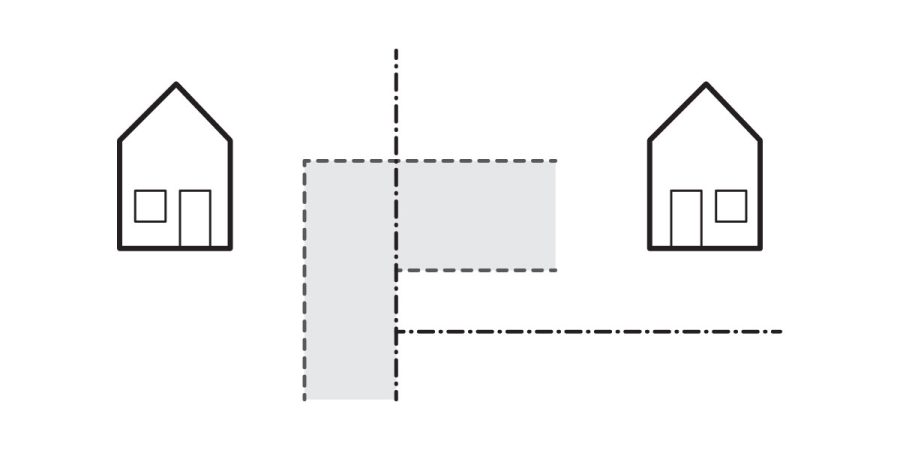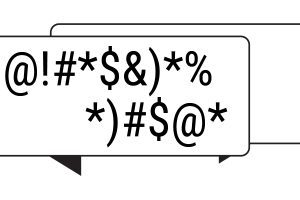Easement
Easement: An acquired right of use, interest, or privilege of another, without the ownership of the portion of the property. For an easement to be legal and binding, such an agreement must be in the general form of a grant deed, and must be recorded in the public records.
- An easement may be established by any municipality for any legitimate constituted public purpose.
- There may be compensation involved and sometimes time limits
- Example: A shared driveway between two properties. (the easement prevents this being moved or developed differently, which would take away the driveway access for the residents)
Utility Easement: Generally, nothing except sidewalks, driveways, parking, and landscaping can be built over a utility easement (generally, nothing “permanent”)
- Example: Government authority maintains an easement to get access to power lines that are only accessible through a person’s property. They would need the easement to provide access, as well as potentially staging and space for access to the actual power lines.
Scenic Easement: Prevent the development of land that is of scenic value to the public
Party Wall: A form of an easement. A party wall is shared by two adjacent owners and each side owns their half of the wall and has an easement to use the other half of the wall. A common example of this is row houses.
- Example: If one house is built before the other, the first owner will build the wall and pay for it completely under an easement. The second owner then builds their property and pays the first owner for half of the construction cost of the party wall. They then share costs for upkeep and repairs involving the wall typically.
Right-of-way: An easement that allows one person to traverse the land creates a private right-of-way. A public right-of-way may come into existence simply by the long-established use of a pathway or roadway over private land whose owner fails to deter such use.
Rights and Restrictions
Rights give a person/entity ownership or claim of some kind over different aspects of the land.
- SubSurface Rights: Rights over things found in the ground such as oil and minerals. Commonly leased or sold completely.
- Air Rights: Rights over the open space (air) above pieces of land. Can be sold/transferred or leased.
- Air rights above land is extremely expensive to sell and purchase. Normally it does not make economical sense, therefore it’s typically only done where real estate values are very high, such as dense urban cities (NYC, SF, etc)
- Solar Rights: The right for a building to have access to sunlight (solar radiation).
- A designer in general should have the approach to be sensitive to the adjacent properties, and try as best as they can to preserve sunlight reaching those sites.
- In general, this is extremely hard legislation to enforce, because it creates strict limitations on future developments.
- Typically involves time lengths. Such as “preserve at least 1 hour of daylight reaching the facade”.
- Riparian Rights: Rights referring to the waterfront edge. The person with the rights owns the land adjacent to the water. These rights refer to the use, duties, and other ecological factors involving the extremely sensitive water edge habitat.
- Cannot be sold or transferred outside of the ownership of the adjacent land ownership.
- Allows the owner to do things with the water, such as the ability to construct a boat house or a dock of some kind. Sometimes it also prevents this.
- The owner does not own the water.
- Littoral Rights: Similar to riparian rights, but along oceans and navigable lakes.
- Similar to riparian rights for use of the water, including aspects such as the right to fish from the shore into the body of water.
- Historic Easement: Established by a municipality to protect and preserve some sort of historically valuable aspect to a building or site. Sometimes directly connected to the history of the site, actions, people, etc.
- Typically this is not a blanket easement, but each aspect is broken down into what is exactly covered or what areas of the site/building. For example, a historic facade easement may protect the facade and public appearance of a property, but not the interiors.
- The owners are not compensated for the preservation of the site, but sometimes there are tax advantages.
Eminent Domain
Eminent Domain is a very interesting and peculiar concept. The government is allowed to exercise “eminent domain” which allows it to require a private entity to relinquish ownership of a property for the benefit of the public.
- Fifth Amendment of the Constitution requires owners to receive compensation when the property is appropriated with eminent domain. Value is determined by a jury, and is required to be ‘just’ and fair.
- This also allows property to be transferred to a private company in the interest of public good. Private utility, railroad, etc.
- This is not done too often as it requires a lot of approvals and sheds a bad light on the government overstepping what many see as their duty.
Example: A new highway is being expanded to ease congestion across a city. The city is looking to add a lane and allow for an additional lane in the future. There is a development in the most direct path of the highway, and all other plans are not economical or do not make sense. The city can take over the development and demolish it to provide access for the highway. Also done for airports, schools, etc.
Condemnation: Legal process where the public authority takes a property in question through the exercising of eminent domain.
To condemn a property is to exercise eminent domain.
- Transfers title from private owner to the government (federal, state, local)
- Condemnation has been mis-represented as only meaning a condemned property which alludes to the property falling in disrepair and needs someone to take it over. Such as a foreclosure or other requirement. This is not the only definition; it also means when the government takes over a property for the public good as well, but this definition is less common.



